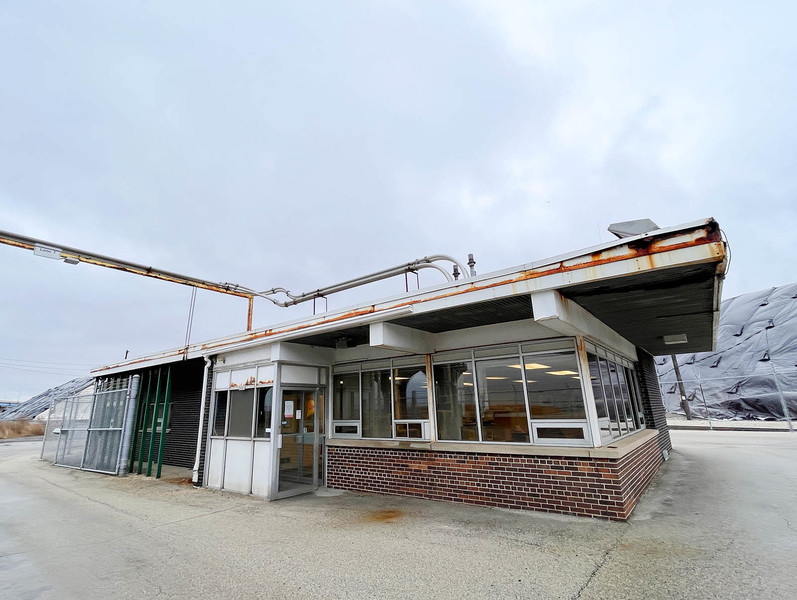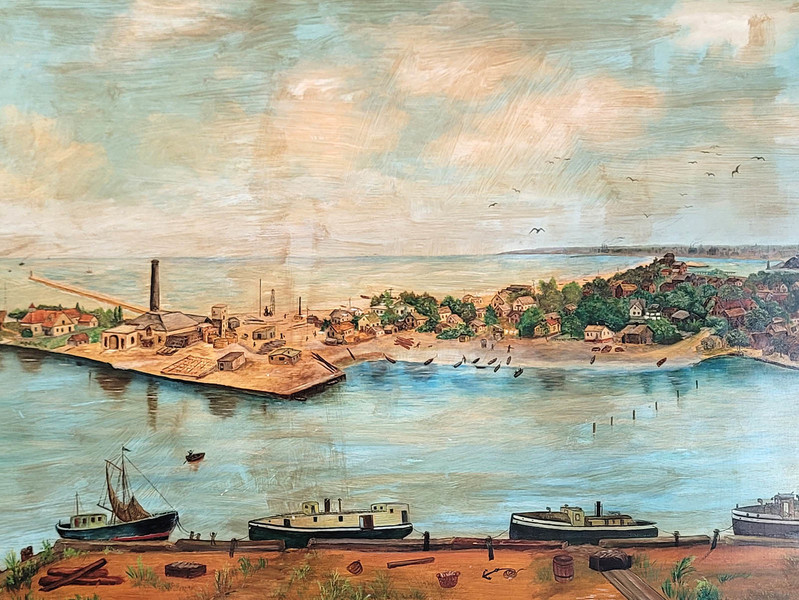During a recent walk around Jones Island, I was reminded of an article I had seen. This story detailed -- in words and pictures -- the remarkable makeover Amsterdam has given to its old industrial areas, transforming them into neighborhoods full of shops, offices and families, with children playing in the streets.
And it made me think about what Milwaukee would be like if Jones Island was like that – a bridge between Downtown and the Third Ward and Walker's Point and Bay View. Hard to imagine, isn't it?
But once upon a time, Jones Island was home to Milwaukee's most unusual and, arguably, most idyllic community.
First a bit of background. Jones Island wasn't originally an island. It was a marshy peninsula connected to the Third Ward and separated from Bay View by the city's old -- natural -- harbor. To the west was the Milwaukee River and to the east, Lake Michigan. When Father Zenobius Membre visited the peninsula in 1679, there were villages occupied by Native Americans of the Fox and Mascouten Indians.
During the 1850s James Monroe Jones opened a shipyard on peninsula and at the same time, the city began to cut a new harbor across the width of peninsula near the northern end.
The straight cut, as it was called, was completed in 1857, the same year the Jones' woes began as his shipyard was threatened by financial strain and the batterings of lake storms.
But the new island would come to be known as Jones Island in his honor. Over time, however, the lake deposited sand in the old harbor and soon it was filled, making the island a peninsula again, but this time it pointed north!
But more than just geography was changing on Jones Island. In the 1870s, Milwaukee's third major Polish neighborhood sprouted as immigrants hailing for the Kaszuby region of Poland began to settle on Jones Island. Soon they were joined by Pomeranians and other groups and their town -- unique in Milwaukee -- grew.
"Their village, whose population ultimately peaked at nearly 1,600, was a picturesque jumble of homes, saloons, fish sheds, and net reels linked by a street system that might best be described as improvised," wrote Milwaukee historian John Gurda in his book, "The Making of Milwaukee," published by the Milwaukee County Historical Society.
"While their counterparts on the mainland took places in the industrial rank and file, Jones Islanders continued the semi-rural, village-oriented way of life they had known for centuries in the homeland."
But, as you can see, time waits for no man on Jones Island and the Kaszubs and their neighbors' way of life was ephemeral. In 1880, the island became the site of a pumping station that received the city's liquid waste and sent it out into the lake. In 1902, a garbage incinerator was opened on the island to burn Milwaukee's trash.
By the 1920s the Kaszubs were all but pushed off Jones Island and the island was transformed. One particularly hearty soul, Capt. Felix Struck, managed to hang on until 1943, but most others left quickly as the river was dredged and the muck dumped on the lake side, widening the peninsula considerably. Today's sewage treatment plant was installed on the north end of Jones Island in 1925 and a carferry to transport trains across the lake by ship was built in 1929. Shipping industry buildings and docks were added during the following decade.
Industrial development has continued ever since on the island. Drive along on one of the few streets and you'll see piles of salt and sand and who knows what. Ships are still loaded and unloaded on both river and lake side and train tracks criss-cross the peninsula, which is practically barren of trees and grass.
The site of the former immigrant is marked by a park that boasts one of the island's perhaps dozen trees, a park bench and a patch of grass. But it, too, is surrounded by warehouses, box cars, freight containers, stacks of railroad ties, discarded palettes and the like.
Jones Island remains the backbone of Milwaukee's shipping industry.
Born in Brooklyn, N.Y., where he lived until he was 17, Bobby received his BA-Mass Communications from UWM in 1989 and has lived in Walker's Point, Bay View, Enderis Park, South Milwaukee and on the East Side.
He has published three non-fiction books in Italy – including one about an event in Milwaukee history, which was published in the U.S. in autumn 2010. Four more books, all about Milwaukee, have been published by The History Press.
With his most recent band, The Yell Leaders, Bobby released four LPs and had a songs featured in episodes of TV's "Party of Five" and "Dawson's Creek," and films in Japan, South America and the U.S. The Yell Leaders were named the best unsigned band in their region by VH-1 as part of its Rock Across America 1998 Tour. Most recently, the band contributed tracks to a UK vinyl/CD tribute to the Redskins and collaborated on a track with Italian novelist Enrico Remmert.
He's produced three installments of the "OMCD" series of local music compilations for OnMilwaukee.com and in 2007 produced a CD of Italian music and poetry.
In 2005, he was awarded the City of Asti's (Italy) Journalism Prize for his work focusing on that area. He has also won awards from the Milwaukee Press Club.
He has be heard on 88Nine Radio Milwaukee talking about his "Urban Spelunking" series of stories, in that station's most popular podcast.




.jpg)


